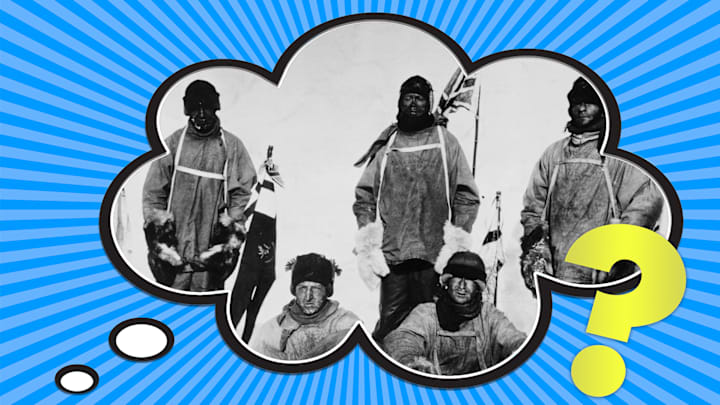Though you may have assumed that hypothermia is just a more formal name for frostbite, the two are actually separate conditions. Here’s how to tell them apart—and how to recognize symptoms of each one.
What Is Frostbite?
The basic difference between frostbite and hypothermia is that frostbite involves parts of the body, while hypothermia involves the body overall.
According to the Mayo Clinic, frostbite is “caused by freezing of the skin and underlying tissues.” It starts with frostnip, characterized by pain, tingling, and/or numbness in the affected area—most frequently fingers, toes, nose, and ears. At this stage, you can treat it yourself by rewarming the skin “in a bath of warm (not hot) water,” per the Cleveland Clinic. “This will be a slow rewarming process that can take at least 30 minutes.” Then you should cover the area in blankets, but be sure to leave it unwrapped so you don’t cut off circulation.
As frostbite worsens, your skin may start to feel warm and change to a color that’s different from your usual skin tone. These are signs that you should seek medical attention. Frostbite can also feature swelling and blisters that range in hue from clear to blue. At its most frostbitten, your skin could even turn black, signifying dead tissue. Severe cases of frostbite may require amputation.
It’s common knowledge that frostbite is caused by exposure to the cold. What you might not realize is just how much wet or windy weather can exacerbate the risks. Many a polar explorer learned this the hard way.
“Seventy or eighty degrees of frost can be endured by any healthy individual if seasonably clothed and there be no wind,” photographer Herbert Ponting wrote in The Great White South, about his experiences during Robert Falcon Scott’s expedition to the South Pole between 1910 and 1913. “But if a breeze, be it ever so gentle, gets astir in such a temperature, it behoves one to be well alert, for Jack Frost is ever on the watch to take his toll, and he will bite as often and as deep as he gets the chance. Consequently, in the winter time it was nothing unusual to see the tips of half the noses in the Hut ‘hanging in rags.’ ”

Frostbite can even occur in mere seconds if your skin comes in contact with freezing-cold metal. “[Emile] Danco came in … with a piece of skin, torn from his eye, frozen to the metal of the eye-piece of his instrument,” physician Frederick Cook wrote during his 1898–1899 Antarctic expedition. Another expedition member, after holding two nails in his mouth for a moment, “snatched them out quickly, bringing along bits of his tongue and lip, and leaving ugly wounds which in character were exactly like the injuries of a hot iron.”
Frostbite is harrowing and painful, to be sure. But it’s still, to borrow the words of Monty Python’s ill-fated Black Knight, just a flesh wound. The same can’t be said for hypothermia.
What Is Hypothermia?
Hypothermia literally means “under heat,” but it can generally be interpreted as something like “less than the normal amount of heat.” In short, you’re not warm enough—your body temperature has fallen below 95°F. Like frostbite, hypothermia progresses in stages. Unlike frostbite, you can’t treat its mildest form on your own and trust that it’s enough: If you’re experiencing any symptoms of hypothermia, it’s automatically a medical emergency.
Hypothermia impairs both physical and mental function. In a mild case, you’ll be shivering, your teeth may chatter, and you’ll have trouble talking or moving around as smoothly as usual. Your heartbeat and breathing will quicken. You may also start to experience confusion and a loss of awareness, per the Cleveland Clinic. The body temperature range for mild hypothermia is typically identified as between 95°F and 89.6°F.
As your body temperature drops below that, your heartbeat and breathing rates will also drop, and shivering may stop. You’ll become stiff and exhausted, and you’ll start to slur your speech. Your cognitive abilities will decrease; you may even start hallucinating. This is moderate hypothermia, ranging from 89.6°F and 82.4°F. If your temperature drops any further, you have severe hypothermia—which can be fatal. Your body essentially begins to shut down. Your reflexes will stop working, you won’t be able to move around on your own, and fluid may enter your lungs. Your blood pressure will plummet, and you might fall into a coma.
To rewarm someone with hypothermia while you wait for medical assistance, the Mayo Clinic advises wrapping them in warm, dry blankets and giving them a “warm, sweet, nonalcoholic, noncaffeinated drink.” Dry warming compresses should only be applied “to the neck, chest wall or groin,” as applying heat to appendages “forces cold blood back toward the heart, lungs and brain, causing the core body temperature to drop.”
Because hypothermia and frostbite are often caused by similar conditions—exposure to the cold, especially if it’s wet and/or windy—they can happen concurrently. But hypothermia is the more dangerous of the two.
Learn More Tricky Differences:
